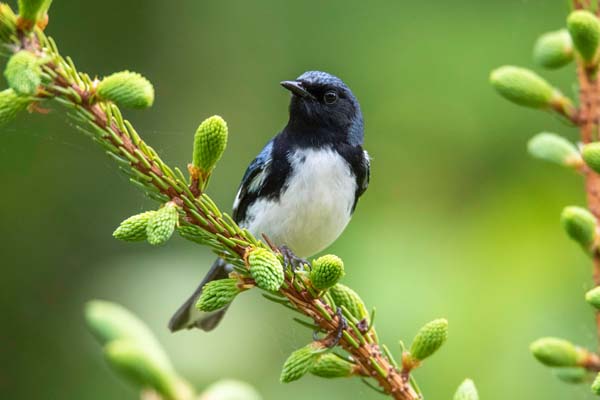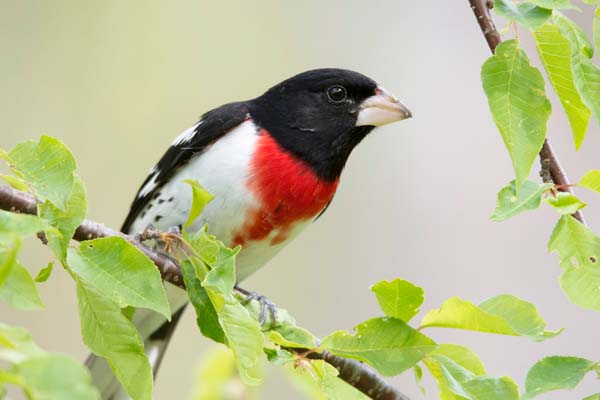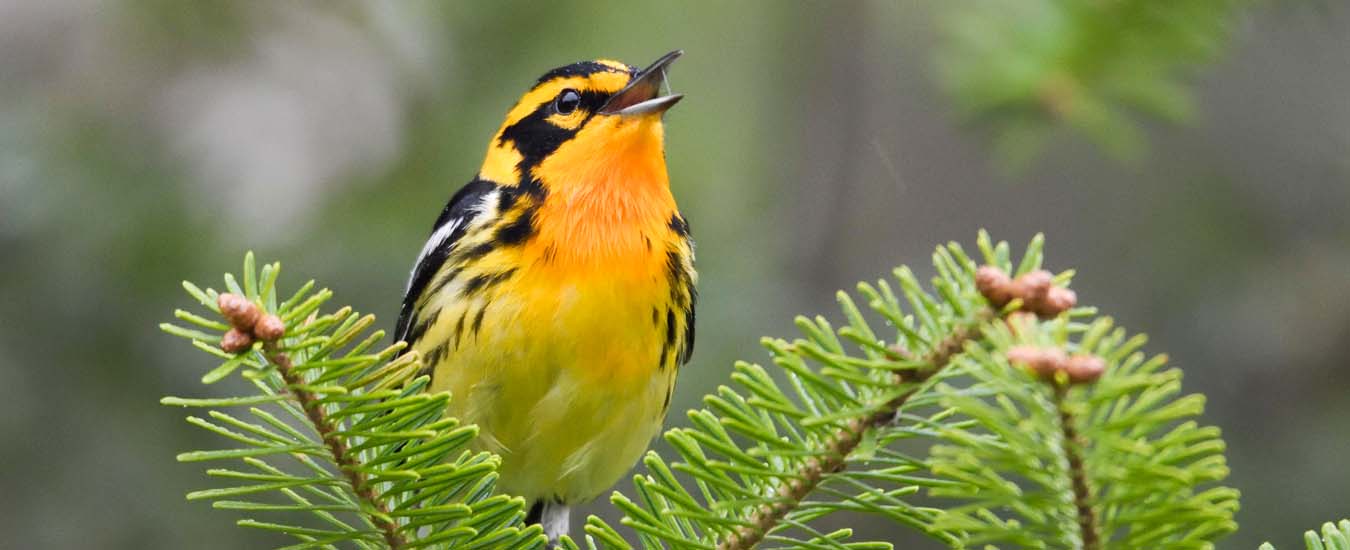"Beautiful vagabonds” sing their songs as they rejoice in another Atlantic spring
If you’ve never heard the serenade of songbirds at daybreak on a late May or early June morning, you are missing what writer Rachel Carson called “the throb of life itself.” Known as the dawn chorus, this earth music is performed by, in the words of the naturalist John Burroughs, “beautiful vagabonds, endowed with every grace...” These “beautiful vagabonds” come from tropical places like Colombia and Ecuador, Cuba and Hispaniola. In their hundreds of thousands, neo-tropical migrant songbirds descend on our region in spring, filling our forests with colour and sound.
Warblers, flycatchers, vireos, tree swallows, thrushes, sparrows and a host of other species return from distant points in the Caribbean and South America to find a breeding territory that might be smaller than an acre. Some, such as the Blackburnian warbler, may have travelled more than 5,000 kilometres from winter habitat in an Andean mountain forest to spend the summer in a patch of mature Acadian forest in the Maritimes.
New arrivals waste no time finding food to replenish their travel weary bodies. Over thousands of years evolution has timed the arrival of spring migrants to coincide with the hatching of insects, providing them with a rich and immediate food supply. This finely honed synchrony may be threatened, however. There’s evidence that as the climate warms and insects hatch earlier in the spring, birds are sometimes arriving a little too late to match the peak of the food supply. Although it appears that affected birds may be adapting to the new timing, whether they’ll do so quickly enough over the long run isn’t known.

Black-throated blue warbler also sporting its breeding plumage.
But finding food is just one of the boxes that birds must tick on the breeding season “to-do list.” They also need to establish a territory and find a mate. These two activities are the primary reasons why male songbirds sing so much in spring. Then comes nest site selection and building, the laying and incubation of eggs, and finally raising and fledging the young. All of this is time-crunched into just a few months before they fly south again in the fall. That generations of these small migrant birds—some weighing 10 grams or less—have been able to accomplish this here for untold centuries inspires admiration and respect! They need healthy woodlands to do it.
Few terrestrial ecosystems are more complex than a forest and every breeding bird needs a specific habitat within that forest if it’s to successfully reproduce. Just a couple of examples of this: black-throated blue warblers require mature hardwoods or mixed forest with an understory of shrubs and saplings in which to build their nests; threatened olive-sided flycatchers, on the other hand, only breed in the cavities of standing dead trees located in or beside wooded swamps surrounded by forest. Neither of these, nor any other species, can reproduce and thrive when its particular habitat requirements aren’t met. Each needs its special place in the woods. Yet, with humans’ rampant resource utilization, such places are getting harder to find for breeding birds.

Rose-breasted grosbeak in breeding plumage.
Some neo-tropical migrant songbirds arrive home in the Maritimes in spring only to find their patch of forest has been destroyed by logging during the previous winter. Even more troubling, many have their home habitats cut down while occupying their nests during the late spring and early summer.
According to a 2013 study in the journal Avian Conservation and Ecology, it’s estimated that in Nova Scotia up to 160,000 nests are destroyed annually by logging operations during the breeding season, (New Brunswick’s numbers are similar) with the potential loss to the next generation of tens of thousands of young. This occurs despite the Migratory Birds Convention Act (MBCA), a statute that prohibits the destruction of nests during breeding season. But when it comes to the cutting of woodlands, it is rarely enforced. Simply put, it gets harder every year for migrant forest birds to successfully breed. Is it time to have a short “silent season” in late spring/early summer when industrial activity takes a brief break for nesting birds?
Every spring we welcome back throngs of songbirds to the region’s forests, as neo-tropical migrants of every shape, size, and colour lift our spirits with a serenade that grows a little quieter each passing year. By truly adopting in both spirit and practice ecologically sensitive, sustainable forestry practices we can ensure that this wondrous natural event can continue indefinitely.
